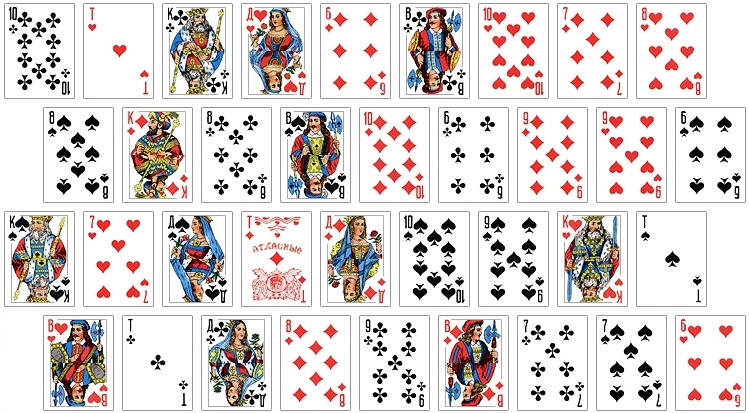Baker's dozen
Take a deck of 36 cards, shuffled thoroughly, remove, then ask a question or focus on the issue that we are concerned. Thereafter lay horizontal rows 4 through 9 of cards in each row, as shown, below. Thus, we turned 51 a couple of cards. Couples cards are formed as follows. For the formation of pairs of main cards are cards of the second and fourth row. Take, for example, the first card of the second row is 8 peak, it forms 4 pairs: with the ten of clubs, ace of Hearts, with the king of the peak, with the seven hearts. Take the first map of the fourth row is a jack screw, it forms two pairs: the king of spades and the seven with hearts. Next, we define a method by which to determine the pair, there are 3 ways: on the same suit on the same card, according to the points in a pair of cards. Price points cards: Ace - 1 point, King - 2 points, the lady - 3 points, Jack - 4 points, remaining at par. An ace with a king or a king with a lady counted as 13 points. Then count the number of formed pairs and see the answer on the number of pairs in the Expositor. Interpret strictly allowed only one way.

expositor
On the same suit
21 and over - yes or very soon.
15-20 - yes, it is quite possible, will have to wait a bit.
10-14 - your chances are 50 * 50.
6-9 - is unlikely to come true.
5 or less - a categorical no.
On the same card
16 and over - yes.
12-15 - Yes, but not soon.
8-11 - perhaps, but little chance.
6-7 - is unlikely.
5 or less - there is not hope.
On the sum of points of the cards in the pair
15 and over - yes.
10-14 - all will just have to wait.
7-9 - is possible, but unlikely.
6 or less - forget about it.


Comments
Commenting, keep in mind that the content and the tone of your messages can hurt the feelings of real people, show respect and tolerance to his interlocutors, even if you do not share their opinion, your behavior in terms of freedom of speech and anonymity offered by the Internet, is changing not only virtual, but real world. All comments are hidden from the index, spam control.